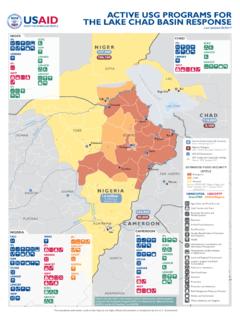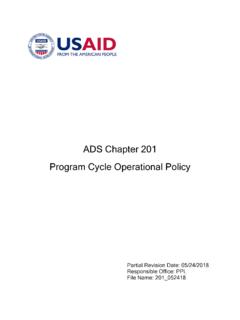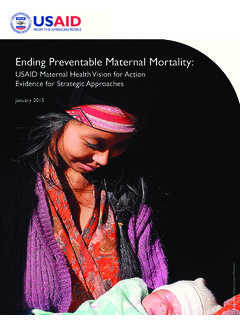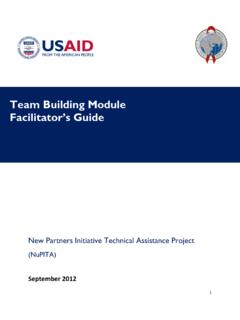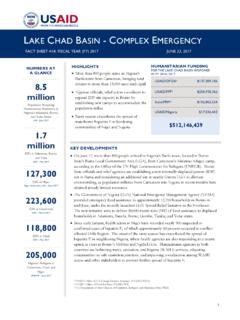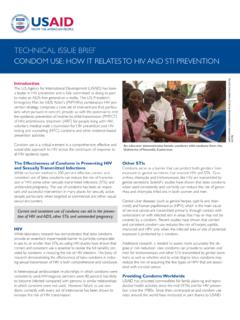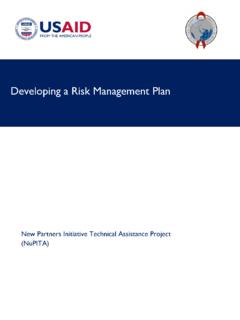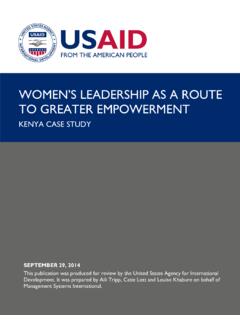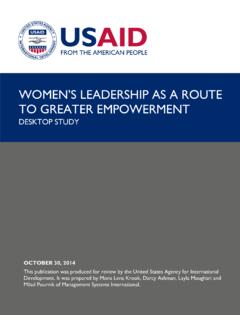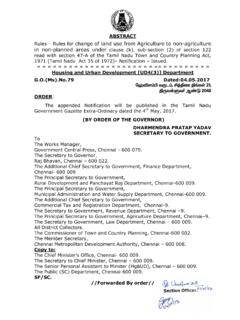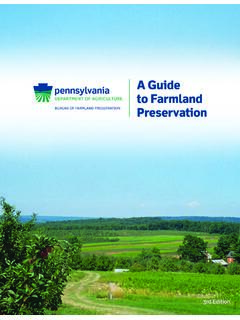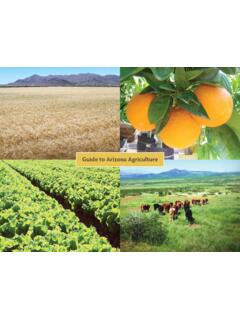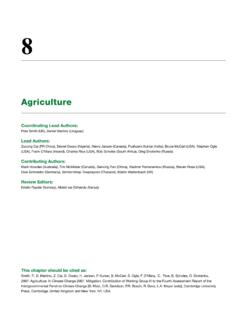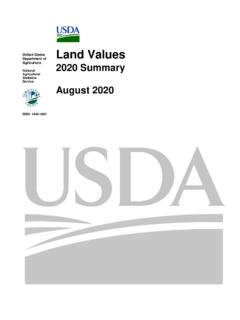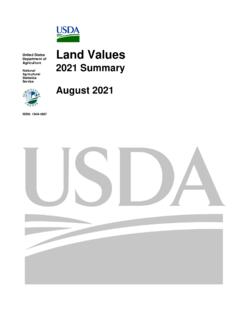Transcription of ENGAGING YOUTH IN AGRICULTURE through Information …
1 ENGAGING YOUTH IN AGRICULTURE through Information and Communication TechnologiesiiABBREVIATIONSAIA rtificial IntelligenceICTI nformation and Communication TechnologyIPMI ntegrated Pest Government Global Food Security StrategyGSMAThe GSM Association (commonly referred to as 'the GSMA' or Global System for Mobile Communications, originally Groupe Sp cial Mobile) is an originally-European trade body that represents the interests of mobile network operators worldwideGDPG ross Domestic ProductNGONon-governmental organizationSMSS hort Message Service; a text messaging service component of most telephone, Internet, and mobile-device systems ACKNOWLEDGEMENTSThis document was written by Nikki Brand and Ellen Galdava.
2 Critical review input and comments were provided by Nicole Bridge (USAID), Chad Blevins (USAID), Conor Farrell (FHI 360), Christina Blumel (FHI 360), and Peter M. Hirst (USAID). Information and input were also provided by Alloysius Attah (Farmerline), Mami Araba Kwenua Amuah (Farmerline), Georgette Bempong (Farmerline), Sibjan Chaulagain (ICT for Agri), Patricia Gichinga (M-Shamba), Krista Jacobs (USAID), Andrew Kovarik (Winrock International), Dace Mahanay (Technoserve), Michael McCabe (USAID), Karis McGill (RTI), Trent McKnight (AgriCorps), Denis Mujibi (Usomi AGRICULTURE ), Melissa Persaud (VOTO Mobile), Alexandria Schmall (USAID), Miles Sedgewick (Rana Labs)
3 , Rachel Sibande (Digital Impact Alliance), and Anand Varghese (DAI).1 Globally, the average age of farmers is 60 years old, and young people are increasingly pursuing non-agricultural careers rather than following in the footsteps of their parents and grandparents (World Farmers Organization, 2017). Worldwide, populations are becoming younger, particularly in Sub-Saharan Africa, where 10 of the youngest countries in the world are located (Hutt, 2016). Youthful populations offer a great opportunity for many countries as the entrepreneurial and innovative energy of young people can help revitalize and enhance local economies.
4 This is particularly true in the agricultural sector, where new technologies and innovative farming practices have the potential to enhance the sector s productivity and effectiveness. However, young people do not automatically gravitate to farming. To see AGRICULTURE as a profitable and exciting career path, young people need education, technical training, and resources (such as land and finance). Information and communication technologies (ICTs) are already bringing new vibrancy and potential to agricultural practices around the world.
5 Young people are more ready and eager to master these new technologies and apply them to AGRICULTURE to increase productivity and solve challenges. At the same time, these technologies can help demonstrate to YOUTH that AGRICULTURE can be a viable and profitable business opportunity, increasing the desirability of AGRICULTURE -related career paths. This case study explores the nexus of YOUTH , technology, and AGRICULTURE , highlighting insights from a meta-analysis of efforts around the world and particularly in Government Global Food Security Strategy (GFSS) countries to engage YOUTH in AGRICULTURE through ICTs.
6 It begins with an analysis of the challenges hindering YOUTH involvement in AGRICULTURE . These include: Family and community pressures Lack of perceived profitability Access to land Access to finance Access to education, technical training, and resourcesDigital Development for Feed the Future a collaboration between USAID s Global Development Lab and Bureau for Food Security is focused on integrating a suite of coordinated digital tools and technologies into Feed the Future activities to accelerate AGRICULTURE -led economic growth and improved nutrition.
7 Feed the Future is the Government s global hunger and food security case study is part of a series highlighting the integration of digital technologies into agricultural programs. Over the past 10 years, and particularly over the past five, the use of mobile phones and Internet-based, digital tools in farming activities has risen dramatically. This is largely due to the widespread adoption of mobile phones in developing and emerging markets, coupled with the spread of 3G and 4G connectivity. What has emerged is a broad set of digitally based applications that have driven greater financial inclusion, more precision in AGRICULTURE , better data collection and analysis, and more effective Information dissemination.
8 Agricultural organizations and programs are increasingly embracing these tools to advance their goals. Each of the first six case studies highlights specific organizations and their approaches to adoption of digital tools, including ways that these tools affect organizational culture, operations and programming. This case study takes a slightly different approach, highlighting insights from a meta-analysis of efforts to engage YOUTH in AGRICULTURE via Information and communication technologies (ICTs).
9 EXECUTIVE SUMMARY2 The case study continues with an analysis of potential opportunities to improve engagement with YOUTH in AGRICULTURE , including: Shifting the perception of farming within rural families and communities Exposing YOUTH to AGRICULTURE early on, incorporating all aspects of the value chain (rather than just farming) Increasing the profitability and productivity of farming, and Introducing AGRICULTURE problems to YOUTH to resolve themSeveral examples are included to illustrate how organizations and projects within GFSS countries across Latin America, Africa, and Asia use ICTs to engage YOUTH in rural communities and inspire them to consider AGRICULTURE and related careers.
10 Examples discussed in depth include Agrijoven and Rana Labs (Guatemala), CocoaLink (Ghana), and ICT for Agri (Nepal). The case study concludes with recommendations for USAID staff, implementing partners, and other organizations that wish to better engage YOUTH in their agricultural programming through ICTs. Morgana Wingard3 BACKGROUND Information and communication technologies (ICTs) including mobile phones and Internet-based digital tools are bringing new vibrancy and potential to agricultural practices worldwide.
